Olivia Erlanger’s dystopian exploration of suburban America is on show in Houston
‘Olivia Erlanger: If Today Were Tomorrow’ is currently on show at the Contemporary Arts Museum Houston
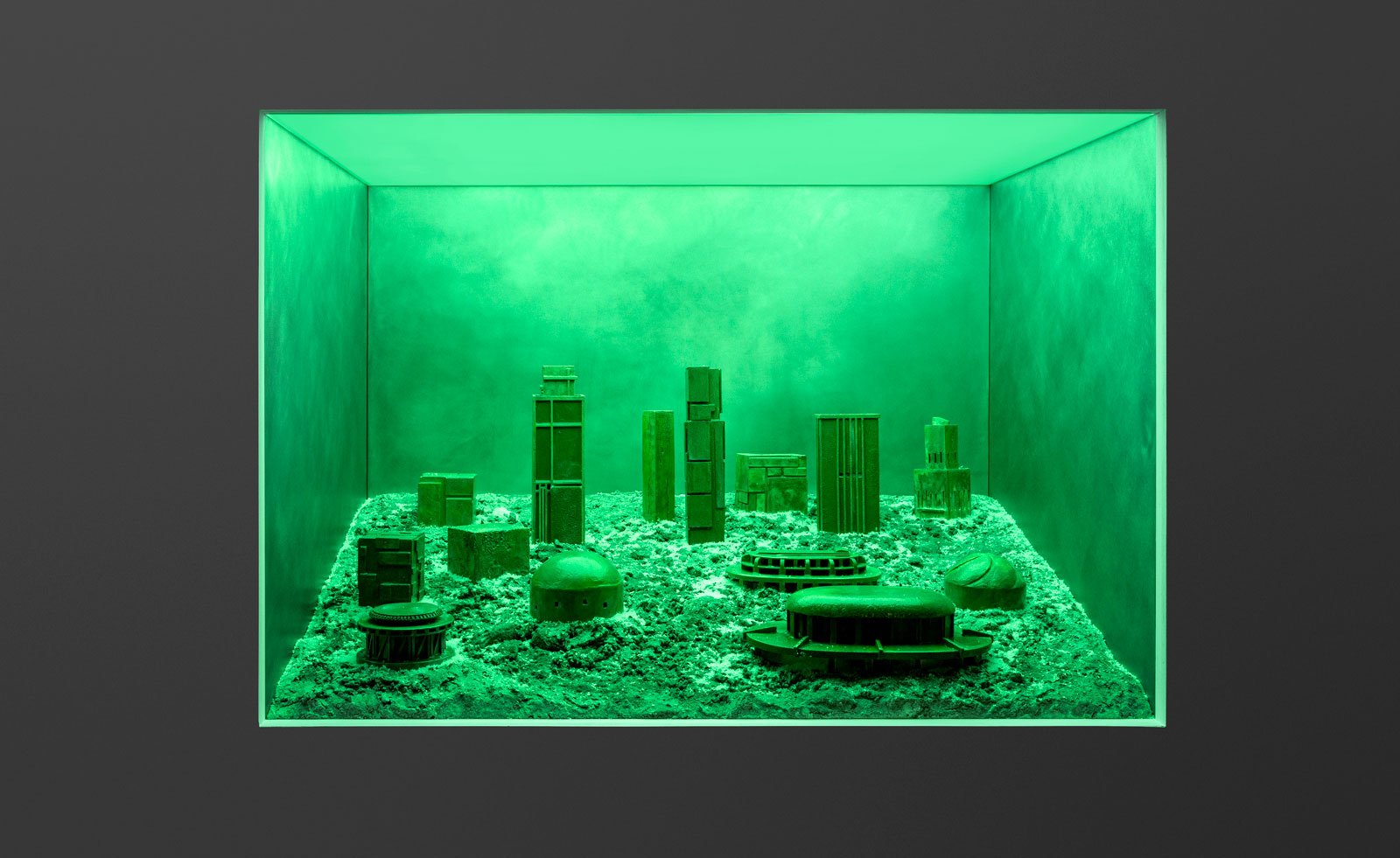
‘Both in school and at home, I was indoctrinated with an ideal of American exceptionalism where progress is linear, and each succeeding generation will be more prosperous than the last,’ says New York-based artist Olivia Erlanger, who is featured in 2024’s Wallpaper* USA 400. ‘This didn’t match with reality. I came of age during the introduction of the personal computer, 9/11, the wars in Iraq and Afghanistan, the advent and parasitic spread of reality TV, the global financial crisis of 2008 – events that have promoted the spiralling and fracturing of that promised progress. But dreams are boring. Delusions are more interesting and more powerful as make-believe frequently turns into reality.’
This preoccupation with the American dream runs throughout her first solo US exhibition, ‘Olivia Erlanger: If Today Were Tomorrow’, on show at the Contemporary Arts Museum Houston (CAMH). The title, taken from David Lynch’s 2006 film, Inland Empire, hints at the often surreal, occasionally nightmarish deep-dive that Erlanger takes into American society, paying particular attention to the concept of home. A juxtaposition of references, from classical to utopian and architectural, reflects the cross-disciplinary nature of the works themselves. Throughout, Erlanger drawson her studies in sculpture and literature, with nods to HG Wells and JG Ballard, as well as to Chris Kraus and Mark von Schlegell, both of whose essays are includedin the exhibition catalogue.
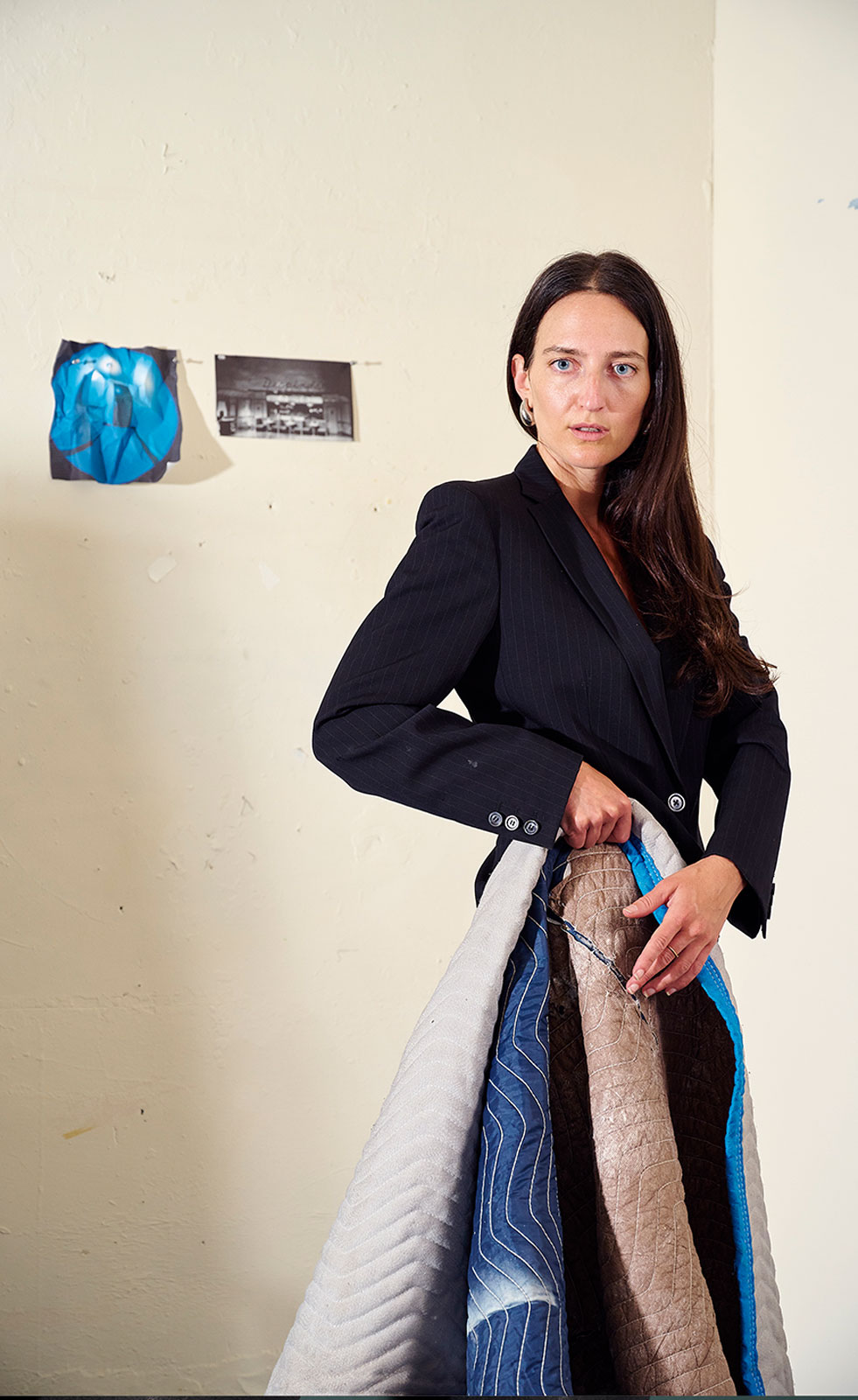
Erlanger photographed in her New York studio in June
What is home? More than a built environment, here it is part of a wider context, becoming a vast ecosystem, from a neighbourhood to a planet, its possibilities and limitations explored through a series of installations, films and sculptures.
‘When considering my ongoing interest in a suburban periphery, I looked to its component parts: the architecture, infrastructure, even the residents, as a point of departure,’ says Erlanger. ‘I have most enjoyed uniting all the different ways in which I think and create in one space. Additionally, transforming the space at CAMH with the help of architect Jeremy Schipper, who did the exhibition design, was an invaluable opportunity for me.’
Erlanger respects the mundane. She finds joy in everyday items often overlooked in society’s aggressive quest for social mobility. ‘My practice has long investigated the semiotics of suburbia, in which the home is proposed as a greater ecosystem containing not only houses, but also their surrounding infrastructures,’ she adds. ‘Maybe it’s obsessive, but focusing on this specific set of concerns has been deeply productive and led me to develop multiple bodies of work, including sculptures, installations, films and two books. Take my most recent book, Appliance: I include five essays on the histories of different domestic objects and a play, Humour in the Water Coolant. Shortly after staging the play, I altered and adapted the story into a narrative short film, also titled Appliance, which premiered as part of ‘If Today Were Tomorrow’.’
This eclectic roster of mediums supports Erlanger in her ongoing crusade for the democratisation of art, eschewing the traditional hierarchy of fine art that has, in the past, been guilty of keeping the public at arm’s length. Through works such as her large, illuminated planets, which plot the rapidly growing sprawl of the suburban landscape, and her diorama sculptures, which wrestle with power and property– all created on a sliding scale from ‘miniature to monstrous’ – viewers can take pleasure in the many ways there are of dissecting a space. Here, Erlanger riffs off traditional ways to plot the infrastructure of a city, the planet sculptures tracing transport and electrical pathways on their surface, tracking the links between suburbia and commerce hubs.
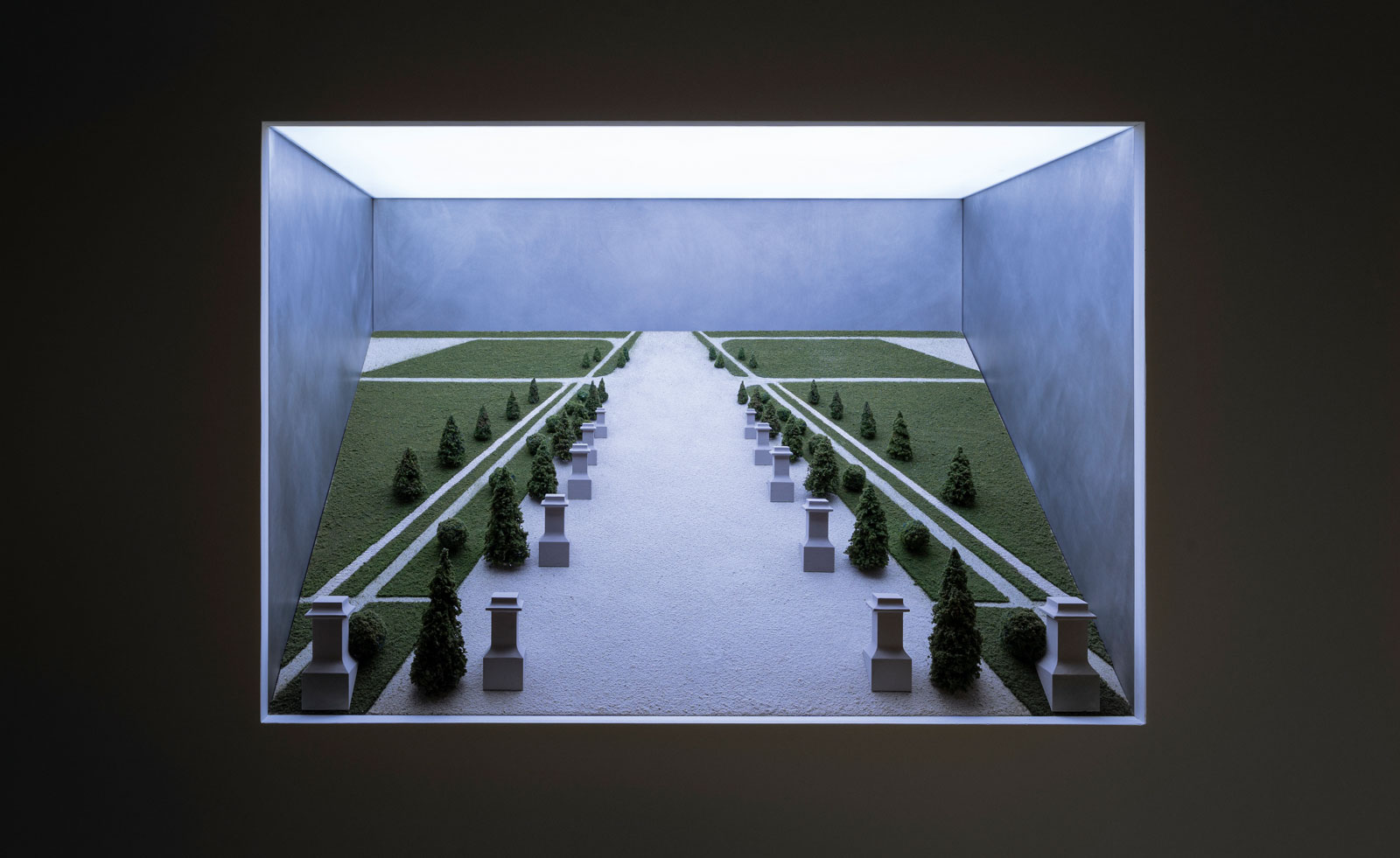
Blue Sky, 2024
Throughout, Erlanger teases at the definition of what a human-made and climate-controlled environment can be, building on her fascination with what architectural theorist Lydia Kallipoliti calls ‘closed worlds’. The term, referring to the habitats we have created to the detriment of the outside environment, takes shape inthe sculptures exploring alternative worlds, from a mountain encircled by disintegrating farmers’ walls to a city made only from speculative real estate.
Receive our daily digest of inspiration, escapism and design stories from around the world direct to your inbox.
They are dystopias belied by a sense of occasional horror. In the short film, Appliance, domestic technologies become synonymous with humans in a slyly sinister questioning of where we end and the machine begins. ‘Through a narrative that plays with horror film tropes, it specifically focuses on how their operations have been considered interchangeable with human bodily functions,’ Erlanger adds.
‘Olivia Erlanger: If Today Were Tomorrow’ is on show until 27 October at Contemporary Arts Museum Houston
This article appears in the August 2024 issue of Wallpaper*, available to download free when you sign up to our daily newsletter, in print on newsstands from 4 July, on the Wallpaper* app on Apple iOS, and to subscribers of Apple News +. Subscribe to Wallpaper* today
Hannah Silver is the Art, Culture, Watches & Jewellery Editor of Wallpaper*. Since joining in 2019, she has overseen offbeat art trends and conducted in-depth profiles, as well as writing and commissioning extensively across the worlds of culture and luxury. She enjoys travelling, visiting artists' studios and viewing exhibitions around the world, and has interviewed artists and designers including Maggi Hambling, William Kentridge, Jonathan Anderson, Chantal Joffe, Lubaina Himid, Tilda Swinton and Mickalene Thomas.
-
 Why are the most memorable watch designers increasingly from outside the industry?
Why are the most memorable watch designers increasingly from outside the industry?Many of the most striking and influential watches of the 21st century have been designed by those outside of the industry’s mainstream. Is it only through the hiring of external designers that watch aesthetics really move on?
-
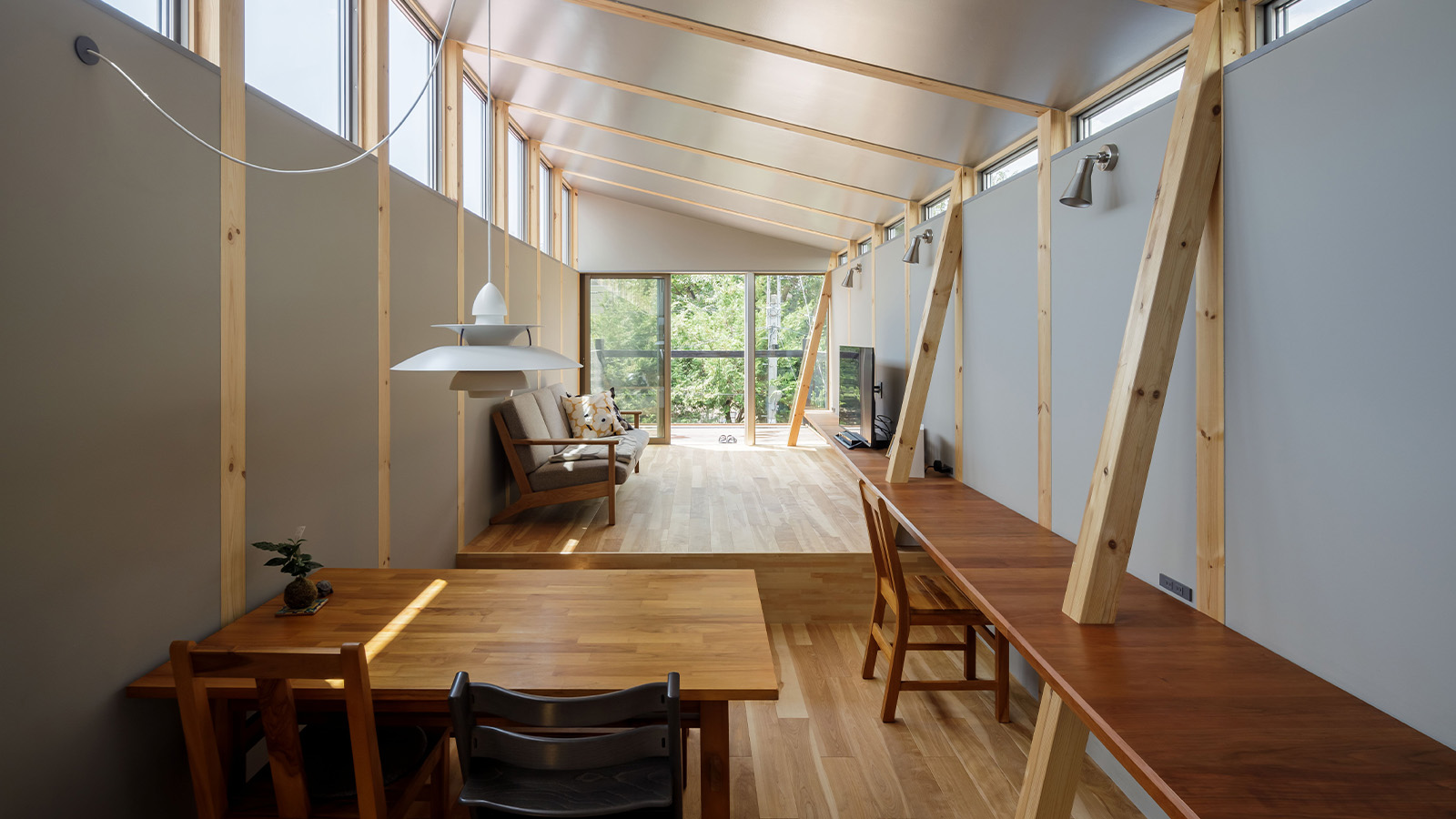 This Fukasawa house is a contemporary take on the traditional wooden architecture of Japan
This Fukasawa house is a contemporary take on the traditional wooden architecture of JapanDesigned by MIDW, a house nestled in the south-west Tokyo district features contrasting spaces united by the calming rhythm of structural timber beams
-
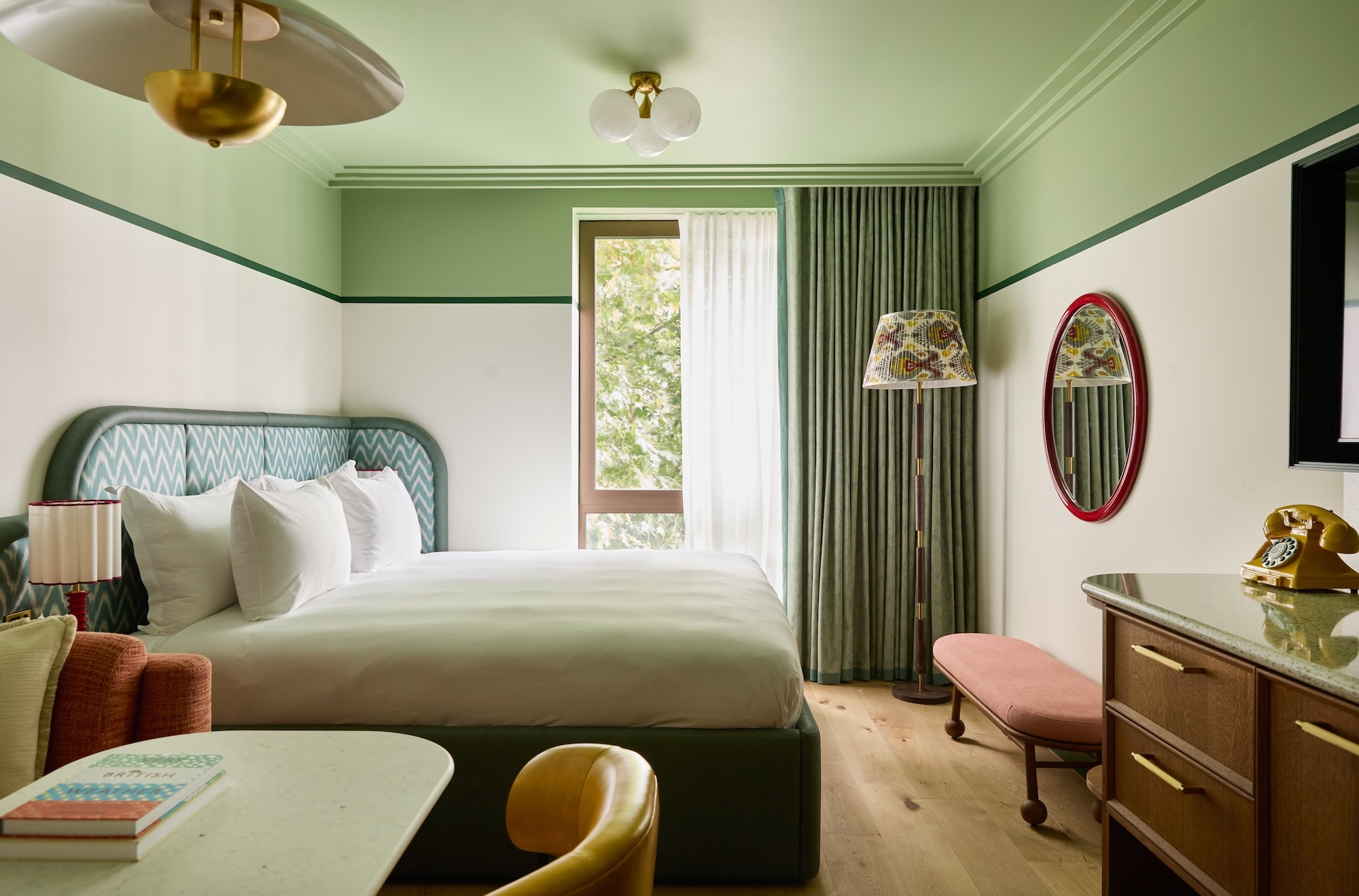 At last: a London hotel that’s great for groups and extended stays
At last: a London hotel that’s great for groups and extended staysThe July London Victoria, a new aparthotel concept just steps away from one of the city's busiest rail stations, is perfect for weekends and long-term visits alike